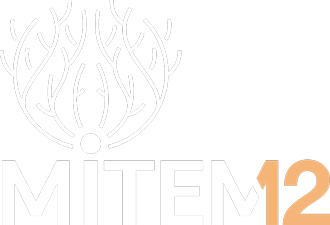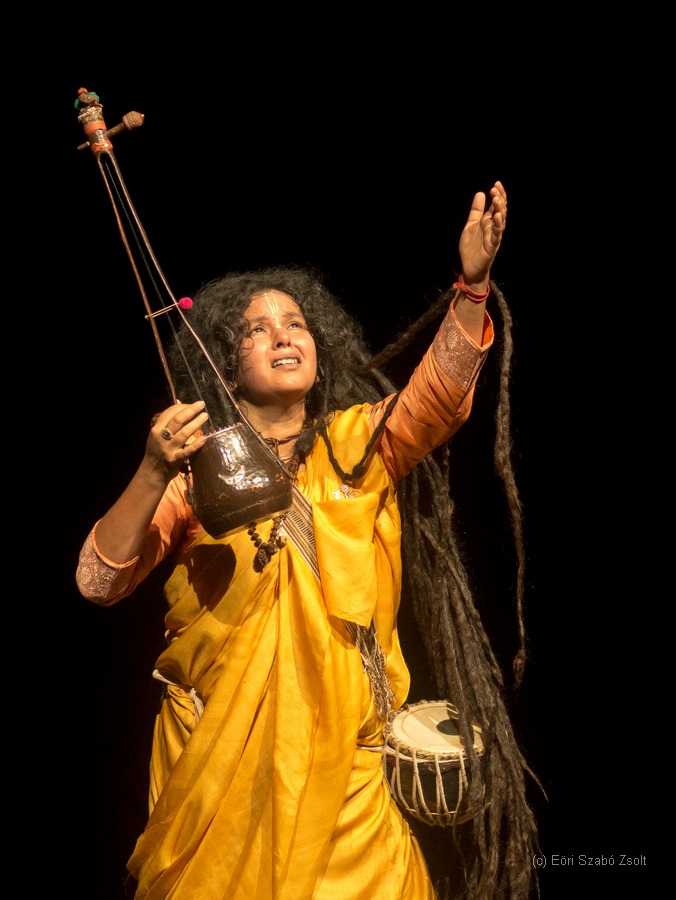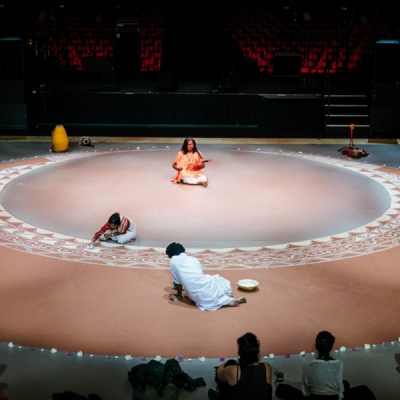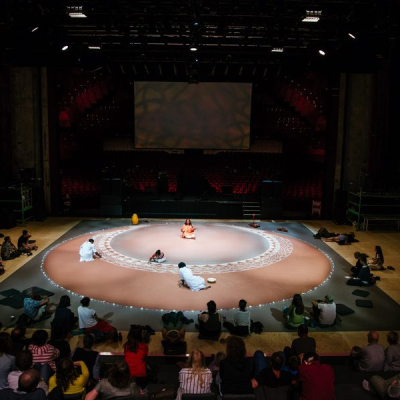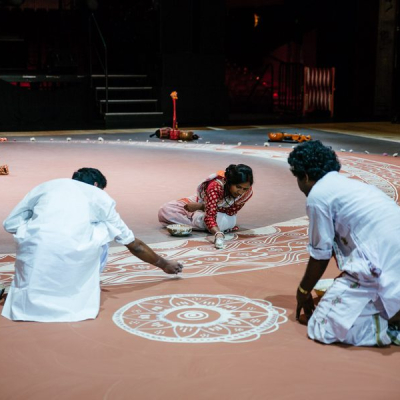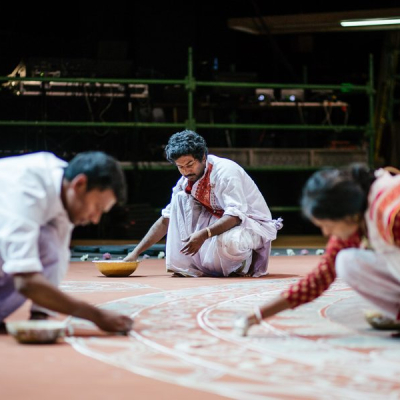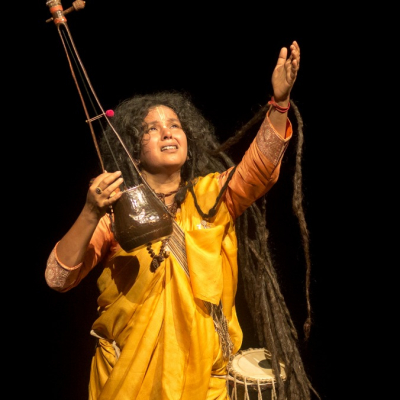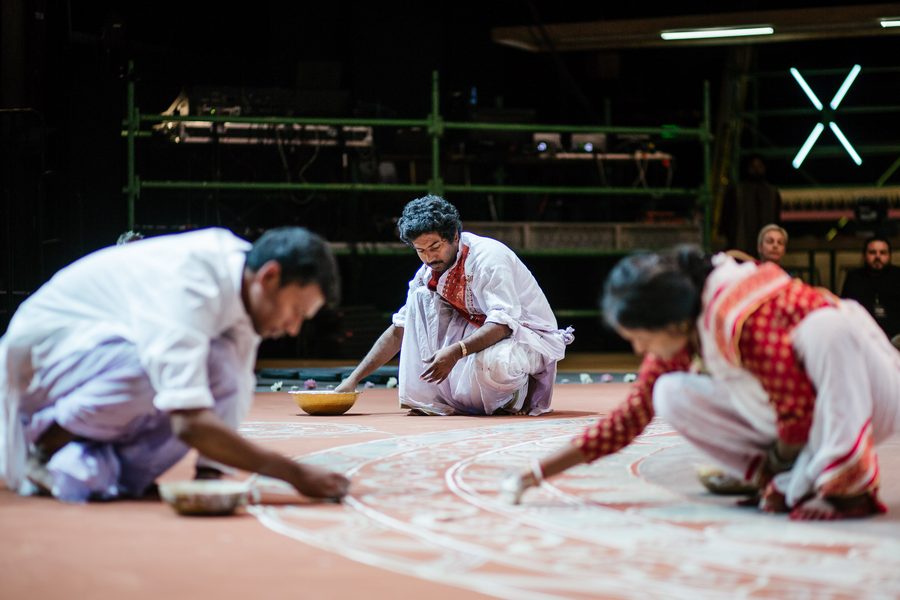LOVE SONGS BEYOND SPACE AND TIME - BY BAULS OF BENGAL

The Group of Parvathy Baul, India
Director: Parvathy Baul
Performed In Bengali with Hungarian subtitles.
2 hours, without breaks.
This presentation offers an unique synthesis of two different artistic dimensions: she show a gradual emergence of Álpaná motifs accompanying the Baul songs which express myraid hues of emotions with central essence as longing for the Divine. Baul is mainly an oral tradition – intrinsically connected to the practice of Yogis, Sufis and Mystics – which serves to living wisdom of speaking songs of great saints. It has been practiced and performed through generations since thousands of years, and continues even today. This living tradition of Musical Mystic Practice is evolving everyday through the contributions of contemporary BaulSadhakas (Baulpractioners) of Bengal. Her mission is the purpose of remembering, recognizing the flower of universal love which blossoms in everyone’s heart, devoid of caste, class or religion or any kind of human made boundaries.
Baul songs are mostly composed in simple colloquial Bengali. These poems were written in an unusual language expression, known as SandhyaBhasha or twilight language. Poems written in the style of SandhyaBhasha brings together many layers of subtle meaning written behind the transparent veil of simple metaphor of normal daily village life – of nature, or of human love. This language is also known as the hidden language. The great indian poet from 20 century, Rabindranath Tagore (well-know in Hungary), admired the Baul’s poesy, and he has done a lot to introduce it in the literary life.
The Álpaná refers to colourful motifs, sacred art or painting done with hands and paint which is mainly a paste of rice and flour on auspicious occasions in Bengal. The word Alpana is derived from the Sanskrit alimpana, which means 'to plaster' or 'to coat with'. Traditionally, it was drawn by the women of the house before sunset. In the performance a several meters wide Álpaná will be drawn on the floor by three Álpaná artists over the span of two hours, and the audience will be invited in the conclusion to offer their own motifs in the center.
Even the music ensemble comprises of one-stringed instrument Ektara and rhythm instruments, each with hundreds of years of traditional continuation. All the performers are masters in their own right bring to the presentation authentic experience of the Baul sound. In Sama Veda, we find Ektara, which is a symbol of Oneness, like the single ray of the Sun when it touches earth and this Union, giving birth to newness. The sound of Ektara is imagined as the sound of ” AUM”. This is also known as AnhatNaad, or unstruck sound. Parvathy Baul’s ars poetica is the same as she had heard from her Guru, Shri Sanatan Das Baul ‘we are only the bearers of Ektara; this Ektara only decides – it travels, sings and meets people, we only carry it to different places, I found so much endlessness in one string, that, it is enough for me to cross my life with this single string’.
Supported by:
-

Preview:
Vocalists:
Parvathy Baul, Satyananda Das Baul, Lakshman Das Baul
String Instrument: Niranjan Halder
Sree Khol Player: Pijush Biswas
Dhol Artist: Chetan Das
Álpaná Artists: Rabi Biswas, Jhumki Hembram
Parvathy Baul
